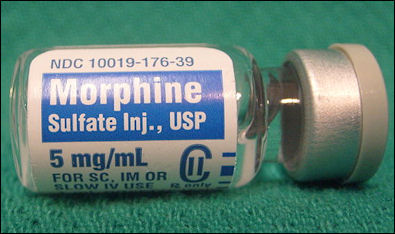OPIODS AND OPIATES
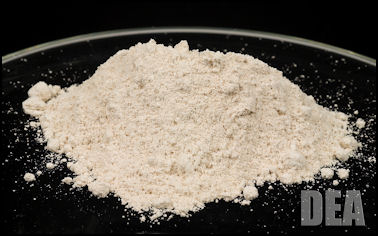
heroin Although the terms “opiate” and “opioid” are often used interchangeably they are different: Opiates refer to natural opioids such as heroin, morphine and codeine, which are derived from the opium poppy. Opioids refer to all natural, semisynthetic, and synthetic opioids and thus include fentanyl and OxyContin as well as heroin and morphine. Some opioids are made from the directly from the opium poppy plant., and others, like fentanyl, are made by scientists in labs using the same chemical structure (semi-synthetic or synthetic). Fentanyl and OxyContin are called prescription opiods because they can be obtained with a doctors prescription. Opium is often seen as a source of opiates and opiods rather than an opiate itself.
According to the UNODC: Opioids are a group of drugs comprising a range of substances, including opiates and their synthetic analogues. Opiates are the naturally occurring alkaloids found in the opium poppy and include morphine, codeine and thebaine. Their semi-synthetic derivatives include heroin, hydrocodone, oxycodone and buprenorphine. Opioids also include a range of synthetic or pharmaceutical opioids, such as methadone, pethidine, tramadol and fentanyl. The group also comprises a diverse group of chemicals – opioid receptor agonists – that were initially developed by pharmaceutical companies with the aim of producing more effective opioids for pain management, but were later discarded or considered unsuitable for further development. Many of those substances, also known as research opioids, novel synthetic opioids or NPS opioids, are considered to be more potent than morphine. Synthetic opioids and pharmaceutical opioids include tramadol methadone, pethidine, pentazocine and fentanyl. Among the opioids taken for medical and non-medical purposes are fentanyl and morphine. [Source: United Nations Office on Drugs and Crime (UNODC), World Drug Report 2021]
Opiods are alkaloids. They work by binding to opiod receptors in the human body found mainly in the central nervous system and gastrointestinal tract. There are at least four major classes of opium receptors in the body. The effects that opiods have depends on which receptors they bind to. The four broad classes of opiods are: 1) endogenous opiod peptides produced by the body; 2) opium alkaloids such as morphine and codeine that are produced by the opium plant; 3) semi-synthetic opiods such as heroin and oxycodene; and 4) fully synthetic opiods such as pethidine and thethadone that have structures unrelated to opium alkaloids.
Codeine is a weak opiate usually sold in pills and syrup and used to sooth coughs and relieve moderate pain after minor operations and tooth extractions. It is a key ingredient in hundreds of millions of prescriptions dispensed worldwide every year. For many years Tylenol with codeine was the best selling drug in the United States. Some people get high from drinking entire bottles of cough syrup with codeine.
In the 1960s, Scottish scientists developed etorphine, an opium-derivative 10,000 times stronger than opium and now used to tranquilize rhinoceroses and elephants. The power of the drug was discovered when British scientists accidentally used a glass rod used in synthesizing etorphine to stir their afternoon tea and fell unconscious on the floor.
See Separate Article HISTORY AND USE OF OPIUM factsanddetails.com ; HISTORY OF HEROIN factsanddetails.com ; HEROIN USE factsanddetails.com ; HEROIN ADDICTION: WITHDRAWAL, TREATMENTS AND MEDICINES factsanddetails.com OPIUM CULTIVATION AND HEROIN PRODUCTION factsanddetails.com ; GLOBAL HEROIN TRAFFICKING factsanddetails.com ; FENTANYL AND PRESCRIPTION OPIOIDSfactsanddetails.com
Websites and Resources: U.S. Drug Enforcement Administration (DEA) justice.gov/dea/concern ; Vaults of Erowid erowid.org ; United Nations Office of Drugs and Crime (UNODC) unodc.org ; Wikipedia article on illegal drug trade Wikipedia ; Frank’s A-to-Z on Drugs talktofrank.com ; Streetdrugs.org streetdrugs.org ; Illegal Drugs, country by country listing, CIA cia.gov/library/publications/the-world-factbook ; Books: “Buzzed” by Cynthia Kuhn Ph.D. Scott Swartzwelder, Ph.D., Wilkie Wilson Ph.D. of the Duke University Medical Center (Norton, 2003); “Consuming Habits: Drugs in Anthropology and History” by Goodman, Sharratt and Lovejoy; “Drug War Heresies: Learning from Other Vices, Times and Places” by Robert MacCoun and Peter Reuter (Cambridge University Press).
Book: “Opium, a History” by Martin Booth (1998, St. Martin's Press); “Opium: A Portrait of the Heavenly Demon” by Barbara Hodgson (Chronicle)
Opiod Use and Users
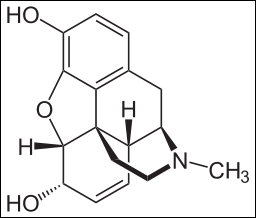
morphine
Opiods are regarded as analgesics (painkillers). One of the biggest problems with them is that they can be addictive. Efforts to produce non-addictive analgesics based on opium have only lead to more addictive drugs.
It is estimated that there was between 37 million and 78 million opioid users around the world in 2019, making opioids the second most used illicit drug globally after cannabis. Many synthetic opioids exist, some of which can be prescribed for medicinal use, but are also widely used in the illicit drug trade and used for recreational purposes. In 2019, there were 49,860 opioid overdose deaths in the United States, of which 14,019 were deaths by heroin overdose. [M. Shahbandeh, Statista, December 15, 2021]
Opioids reached a peak in recent years, first in 2014 and again in 2019, when they tripled compared with the previous year. According to the UNODC: In the United States, the opioid market has fluctuated from the use of heroin to the non-medical use of pharmaceutical opioids, and currently to a dual epidemic of heroin use and non-medical use of pharmaceutical opioids. The non-medical use of pharmaceutical opioids in the country began to increase from 1997, at the same time as an increasing number of opioid prescriptions were being given for pain management, in particular chronic non-cancer pain management. [Source: United Nations Office on Drugs and Crime (UNODC),World Drug Report 2021]
How Opiates Work
In the early 1970s, scientists discovered natural receptor sites for morphine in the brain, spine and intestines. Later, researchers discovered that the human body produces its own morphine-like substances called endorphins that affect the receptor sites and play a part in regulating mood, controlling appetite and alleviated pain.
According to PBS: “In 1972 brain researchers from Johns Hopkins University made a puzzling discovery that would illuminate scientists' understanding of drug addiction. They found that the human brain's neurons had specific receptor sites for opiate drugs: opium, heroin, codeine and morphine. But then there was the obvious question. Why would nature put in our brains a receptor for a plant? After all, humans beings didn't evolve over millions of years eating opium or shooting heroin. The scientists reasoned there must be some other function for these receptors sites. They soon figured out that the active ingredient in all these opiates — morphine — had a chemical structure similar to endorphins, a class of chemicals present in the brain . Endorphins are feel-good chemicals naturally-manufactured in the brain when the body experiences pain or stress. They are called the natural opiates of the body. [Source: PBS, WGBH, Frontline 1998]
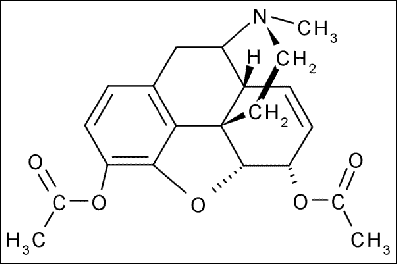
HeroinOpium, morphine, heroin and other opiates work by stimulating the endorphin-containing neurons in the body, causing them to release the endorphins into the nucleus acumbens, an area of the brain associated with pleasure. Opiates also stimulate receptors that slow the transmission of pain signals to the brain and excite the same neurons as brain's natural opioids only they do so more intensely. Opiates are so string because they stimulates so many endorphin transmitters. They also affect endorphin-like transmitters known as enkaphalins which affect breathing and digestion.
“Endorphins flood the space between nerve cells and usually inhibit neurons from firing, thus creating an analgesic effect. On a lower level they can excite neurons as well. When endorphins do their work, the organism feels good, high, or euphoric, and feels relief from pain [analgesia]. Logically, endorphin levels go up when a person exercises, goes into labor, or is stressed out. Although they seem to be triggered by stress, endorphins can do more than relieve pain, they actually make us feel good. Like an evil twin, the morphine molecule locks onto the endorphin-receptor sites on nerve endings in the brain and begins the succession of events that leads to euphoria or analgesia. This imposter is more powerful than the body's own endorphins because the organism can actually control how much of the feel-good chemical hits the brain. Since we are all pleasure-seeking organisms, the motivation to self-administer such a drug is easy to understand. The drawback, of course, is addiction.
Brain Receptors and Opiods
Opiates bind to and activates specific receptors in the brain called mu-opioid receptors (MORs). Our bodies contain naturally occurring chemicals called neurotransmitters that bind to these receptors throughout the brain and body to regulate pain, hormone release, and feelings of well-being. When MORs are activated in the reward center of the brain, they stimulate the release of the neurotransmitter dopamine, causing a reinforcement of drug taking behavior. The consequences of activating opioid receptors with externally administered opioids such as heroin (versus naturally occurring chemicals within our bodies) depend on a variety of factors: how much is used, where in the brain or body it binds, how strongly it binds and for how long, how quickly it gets there, and what happens afterward. [Source: National Institute on Drug Abuse, National Institutes of Health, U.S. Department of Health and Human Services, June 2018]
There are several different kinds of endorphins and at least three distinct types of opiate receptors. According to the UNODC: Opioids act on three types of opioid receptors – mu (μ), delta (Δ) and kappa (Κ) – in the human body, through which they mediate their effects by: (a) depressing breathing through the neurochemical activity in the brain stem where automotive body functions such as breathing and heart rate are controlled; (b) increasing feelings of pleasure by altering activity in the limbic system, which controls behavioural and emotional responses, such as the regulation of stress responses, feeding, mood, learning, memory and immune functions; and (c) blocking pain messages transmitted through the spinal cord from other parts of the body. The abuse liability of an opioid is essentially determined by many factors, including the ease with which the opioid can cross the blood–brain barrier (lipophilicity of the drug), its binding affinity to opioid (mainly mu) receptors, and various pharmacokinetic characteristics such as the ease with which it can be injected or used with other means of administration (smoking or insufflation). [Source: United Nations Office on Drugs and Crime (UNODC),World Drug Report 2021]
The mu-opioid receptor (MOR) seems to be responsible for the pain-relieving and pleasurable effects of opiates. Mice that have been genetically-engineered to not respond to MORs do not seek opiates or seem affected by them. One of the main reason that opiates are so effective is that they dissolve in fatty substances that are easily transported through the bloodstream and can pass into cells. Long term use reduces the sensitivity of endorphin receptors. Users build up a tolerance and need more of the drug to stimulate the same number of endorphin receptors that were affected when the drug was first used.
Effects of Opioids
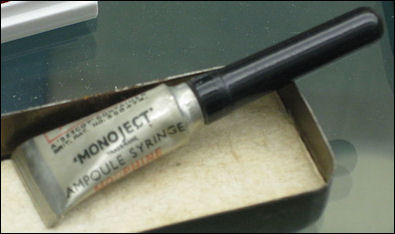
Morphine monojet Opioids bind to and activate opioid receptors on cells located in many areas of the brain, spinal cord, and other organs in the body, especially those involved in feelings of pain and pleasure. When opioids attach to these receptors, they block pain signals sent from the brain to the body and release large amounts of dopamine throughout the body. This release can strongly reinforce the act of taking the drug, making the user want to repeat the experience. [Source: National Institute on Drug Abuse, National Institutes of Health, U.S. Department of Health and Human Services]
In the short term, opioids can relieve pain and make people feel relaxed and happy. However, opioids can also have harmful effects, including: drowsiness, confusion, nausea, constipation, euphoria and slowed breathing.
Opioid misuse can cause slowed breathing, which can cause hypoxia, a condition that results when too little oxygen reaches the brain. Hypoxia can have short- and long-term psychological and neurological effects, including coma, permanent brain damage, or death. Researchers are also investigating the long-term effects of opioid addiction on the brain, including whether damage can be reversed.
Older adults are at higher risk of accidental misuse or abuse because they typically have multiple prescriptions and chronic diseases, increasing the risk of drug-drug and drug-disease interactions, as well as a slowed metabolism that affects the breakdown of drugs. Sharing drug injection equipment and having impaired judgment from drug use can increase the risk of contracting infectious diseases such as HIV and from unprotected sex.
The long term effects of opiates other than addiction and withdrawal are relatively minor. The writer William Burroughs who was addicted to opiates much of life lived to be 83. Long-term users often look old before their time and are pale and skinny. But this has more to do with a lack of exercise and spending money on drugs over food than on the opiates themselves.
The worst side effect of heavy opiate use is constipation. Problems experienced by users while they are using opiates are nausea, vomiting, flushing of the skins and itching Sometimes people go into seizures. Many addicts have problems with a weakened immune system . Some male addicts become impotent and women stop menstruating. The belief that opiate use causes apathy is a myth. Most users need opiates to function and when they have enough of the drug they are generally productive people. Many addicts have jobs and give off no indications that they are addicted.
Opium and the Opium Poppy
_opium_seized_in_Afghanistan.jpg)
raw opium seized in Afghanistan Opiates originate from the opium. Opium is an addictive narcotic made from the dried, bitter, thickened latex of the seed pod a certain kinds of poppies. Used as a medicine and painkiller and for recreation, it can be smoked, eaten, drunk or made into the more powerful drugs such as morphine and heroin. About 10 kilograms of opium produces one kilogram of morphine which yields one kilograms of heroin.
Opium, heroin and morphine all derived from the opium poppy. There are numerous species of poppies, including the corn poppy, the Oriental poppy and the California poppy (California's state flower), but only two varieties of poppies (Papaver somniferum and “Papaver bractatum” ) contain extractable amounts of opium and only “Papaver somniferum” is used in the legal and illegal opium trade.
Believed to be native to the Mediterranean area and sometimes raised as a garden plant, “Papaver somniferum” produces lovely flowers that vary greatly in size and some in a variety of colors, including with white, pink, red, and purple. It comes in dozens of varieties, adapted to different climates and soils. The dried seed cases are sometimes used for decoration and the seeds can be used as a flavoring for cakes and bread.
The opium poppy produces a number of alkaloids. Morphine is the most prevalent, making up 10 to 16 percent of raw opium. There are lesser amounts of codeine, a narcotic alkaloid that is milder than morphine. Poppy straw is a term used to describe hard opium capsules dried on the stem. Often collected by women in aprons, poppy straw yields no opium. Instead it is crushed and dissolved in stainless-steel tanks and processed with of acids, centrifuges, filters and ovens at a high-tech factory, yielding white poppy-straw concentrate (PSC), which can be made into codeine and morphine.
Poppy seeds, which for all intents and purposes contain no opium, are shaken from dried opium capsules and placed on bagels and other foods, pressed into oil used for cooking and paint thinner for artist paints (it dries quicker and yellows less than linseed oil), and processed into high-protein livestock feed. Each capsule yields 800 to 2,000 seeds. Some poppies produces white seeds, which are very popular in Scandinavia. Blue seeds bring high prices on the international spice market.
Heroin and Morphine
Morphine is a natural alkaloid derived from the seed pod of the various opium poppy plants grown in Southeast and Southwest Asia, Mexico, and Colombia. It and codeine occur naturally in opium and are the active ingredients in opium that get a person high. Available in a powder and in liquid form, it is named after the Morpheus, the Greek god of dreams, who was sometimes dedicated with a handful of opium poppies.
Morphine is still regarded as the best means for treating violent pain and is still widely used to treat the pain from things like kidney stones, acute pancreatitis and severe injuries. Ambulances carry it to treat burn victims, relax people pinned in crashed vehicles so they can be more easily removed, and provide immediate relief for people with congestive heart failure by dilating blood vessels and preventing fluid from backing in the lungs.
Heroin is an opioid drug made from morphine. Known by a host of nicknames including smack, junk and H, it is usually sold in the form of a white, beige or chocolate brown powder. When taken orally it rapidly break down into morphine in the body, but when injected, and to a lesser extent, when smoked, it produces an overwhelming rush, or surge of pleasure.

black tar heroin Heroin can be a powder, or a black sticky substance known as black tar heroin. People inject, sniff, snort, or smoke heroin. Some people mix heroin with crack cocaine, a practice called speedballing. Heroin enters the brain rapidly and binds to opioid receptors on cells located in many areas, especially those involved in feelings of pain and pleasure and in controlling heart rate, sleeping, and breathing.[Source: National Institute on Drug Abuse, National Institutes of Health, U.S. Department of Health and Human Services, June 2021]
Heroin is one of the most addictive substances known to man. It is significantly more potent than morphine and enters the brain from the blood more easily. Heroin comes in various grades. Pure heroin hydrochloride is a white powder. It is prized for purity and is sometimes referred to China White. Lower grades are brown in color as a result of various impurities and is called brown sugar. The lowest quality heroin is black tar, often from Mexico. Heroin sold the streets is usually cut with things like talc, baking powder, or quinine. The amount of heroin varies from 10 percent to 70 percent.
Black tar is a cheap, potent form of heroin made in Mexico that has become popular in many areas of the United States thanks to an army of dealers from the town of Xalisco on the Mexican Pacific coast state of Nayarit, Mexico.
Synthetic Opiates and Prescription Opioids
Some prescription opioids are made from the plant directly, and others are made by scientists in labs using the same chemical structure. Opioids are often used as medicines because they contain chemicals that relax the body and can relieve pain. Prescription opioids are used mostly to treat moderate to severe pain, though some opioids can be used to treat coughing and diarrhea. Opioids can also make people feel very relaxed and "high" — which is why they are sometimes used for non-medical reasons. This can be dangerous because opioids can be highly addictive, and overdoses and death are common. Heroin is one of the world's most dangerous opioids, and is never used as a medicine in the United States. [Source: National Institute on Drug Abuse, National Institutes of Health, U.S. Department of Health and Human Services]
Prescription opioids and heroin have similar effects, different risk factors Heroin and prescription opioid pain relievers both belong to the opioid class of drugs, and their euphoric effects are produced by their binding with mu opioid receptors in the brain. Different opioid drugs have different effects that are determined by the way they are taken and by the timing and duration of their activity at mu opioid receptors.
Common prescription opioids include hydrocodone (Vicodin) oxycodone (OxyContin, Percocet), oxymorphone (Opana), morphine (Kadian, Avinza), codeine and fentanyl.. These drugs are used for pain relief are generally safe when taken for a short time and as prescribed by a doctor, but they can be misused. People misuse prescription opioids by: 1) taking the medicine in a way or dose other than prescribed; 2) taking someone else's prescription medicine; and 3) taking the medicine for the effect it causes-to get high.
Opiod Overdoses
MorphineA person can overdose on prescription opioids as well as heroin. An overdose occurs when a person uses enough of the drug to produce life-threatening symptoms or death. When people overdose on an opioid medication, their breathing often slows or stops. This can decrease the amount of oxygen that reaches the brain, which can result in coma, permanent brain damage, or death.
The most serious side effect of opiate use is death from an overdose, often because breathing becomes so slow and relaxed it stops. Overdosing has nothing to do with long-term use. It can occur with a single dose. Often it happens when a user gets a stronger dose than he is used to. The overdosing process often unfolds over hours. First the user gets very sleepy and then slips into a coma and stops breathing. Death often occurs because no one is watching over the user.
Overdoses are most likely of the drug is injected but can occur if a enough of it is smoked, sniffed, swallowed or eaten. Signs of an opioid overdose: 1) unconsciousness; 2) very small pupils; 3) slow or shallow breathing; 4) vomiting; 5) an inability to speak; 6) faint heartbeat; 7) limp arms and legs; 8) pale skin; and 9 ) purple lips and fingernails. If you suspect someone has overdosed, the most important step to take is to call 911 so he or she can receive immediate medical attention. Overdoses of fentanyl are especially tricky because it is often mixed with other drugs and it is sometimes difficult to figure out which drug is causing the overdose. See Fentanyl and Prescription Opiods.
According to the UNODC: In North America, the introduction of fentanyl and its analogues into the drug market has resulted in an unprecedented increase in opioid overdoses attributed to synthetic opioids. Earlier, the opioid epidemic in North America was characterized by cyclical waves of heroin use and non-medical use of pharmaceutical opioids although in recent years, the non-medical use of opioids and use of heroin has stabilized (in the United States). Fentanyls found on the illicit market are mainly used as adulterants in heroin or other drugs or sold as falsified pharmaceutical drugs, with the result that users are often unaware that they are consuming them. As a result, due to the unpredictability of the potency of the different fentanyls, many users end up with non-fatal or fatal overdose. [Source: United Nations Office on Drugs and Crime (UNODC), World Drug Report 2021]
The non-medical use of opioids is attributed to 12.9 million DALYs (healthy years of life lost due to disability and premature death), or 70 per cent of the total 18 million DALYs attributed to drug use disorders. The use of opioids also contributes to the majority of deaths attributed to drug use disorders and contributes significantly to the number of deaths attributed to liver cancer, cirrhosis and other chronic liver diseases resulting from hepatitis C, as well as to those attributed to HIV and AIDS. Heroin remains the opioid of major concern for the great majority of countries, but in some countries and subregions, the non-medical use of pharmaceutical opioids has triggered new health threats in the last few years and has come to be known as an opioid crisis.
Naloxone: the Opiod Overdose Treatment
Opiate overdoses can be quickly reversed with an opiate antagonist such as naloxone or naltrexone that have an affinity with receptors but don’t activate them. aloxone is an opioid receptor antagonist medication that can eliminate all signs of opioid intoxication to reverse an opioid overdose. Hospital emergency rooms treat overdoses with naloxone, which suddenly makes the user wake up. The scene in the film “Trainspotting” in which Retton suddenly jumps up after being given nalaxone is not far from the truth.
.jpg)
Opium poppyNaloxone is a medicine that can treat an opioid overdose when given right away. It works by rapidly binding to opioid receptors and blocking the effects of heroin and other opioid drugs. Sometimes more than one dose may be needed to help a person start breathing again, which is why it’s important to get the person to an emergency department or a doctor to receive additional support if needed. Naloxone is available as an injectable (needle) solution and nasal sprays (Narcan Nasal Spray and Kloxxado). Friends, family, and others in the community can use the nasal spray versions of naloxone to save someone who is overdosing.
Because of the huge increase in overdose deaths from prescription opioid misuse, there has been greater demand for opioid overdose prevention services. Naloxone that can be used by nonmedical personnel has been shown to be cost-effective and save lives. In April 2015, the U.S. Food and Drug Administration (FDA) approved a Narcan nasal spray that is sprayed directly into one nostril. In 2021, the FDA approved a higher dose naloxone nasal spray — Kloxxado. Since Narcan and Kloxxado can be used by family members or caregivers, it greatly expands access to naloxone. [Source: National Institute on Drug Abuse, National Institutes of Health, U.S. Department of Health and Human Services]
The rising number of opioid overdose deaths has led to an increase in public health efforts to make naloxone available to at-risk persons and their families, as well as first responders and others in the community. Some states have passed laws that allow pharmacists to dispense naloxone without a prescription from a person’s personal doctor.
Opiod Addiction
Repeated misuse of prescription opioids can lead to a substance use disorder (SUD), a medical illness which ranges from mild to severe and from temporary to chronic. Addiction is the most severe form of an SUD. An SUD develops when continued misuse of the drug changes the brain and causes health problems and failure to meet responsibilities at work, school, or home. Fentanyl is addictive because of its potency.
People addicted to an opioid medication who stop using the drug can have severe withdrawal symptoms that begin as early as a few hours after the drug was last taken. These symptoms include: 1) muscle and bone pain; 2) sleep problems; 3) diarrhea and vomiting; 4) cold flashes with goose bumps; 5) uncontrollable leg movements; and 6) severe cravings
These symptoms can be extremely uncomfortable and are the reason many people find it so difficult to stop using opioids. There are medicines being developed to help with the withdrawal process, including lofexidine, a non-opioid medicine designed to reduce opioid withdrawal symptoms that was approved by the U.S. Food and Drug Administration (FDA) in 2018. The FDA has also approved sale of a device, NSS-2 Bridge, that can help ease withdrawal symptoms. The NSS-2 Bridge is a small electrical nerve stimulator placed behind the person’s ear, that can be used for up to five days during the acute withdrawal phase.
See Separate Article HEROIN ADDICTION: WITHDRAWAL, TREATMENTS AND MEDICINES factsanddetails.com
Prescription Opioids and Heroin
Prescription opioids and heroin are chemically similar and can produce a similar high. In some places, heroin is cheaper and easier to get than prescription opioids, so some people switch to using heroin instead. Research suggests that misuse of prescription opioid pain medicines such as OxyContin and Vicodinthese may open the door to heroin use. [Source: National Institute on Drug Abuse, National Institutes of Health, U.S. Department of Health and Human Services, June 2021]
Data from 2011 showed that an estimated 4 to 6 percent who misuse prescription opioids switch to heroin and about 80 percent of people who used heroin first misused prescription opioids. More recent data suggest that heroin is frequently the first opioid people use. In a study of those entering treatment for opioid use disorder, approximately one-third reported heroin as the first opioid they used regularly to get high.

fentanyl pills
The relationship between prescription opioid abuse and increases in heroin use in the United States is under scrutiny. These substances are all part of the same opioid drug category and overlap in important ways. Currently available research demonstrates: 1) Prescription opioid use is a risk factor for heroin use. 2) Heroin use is rare in prescription drug users. 3) Prescription opioids and heroin have similar effects, different risk factors. 4) A subset of people who abuse prescription opioids may progress to heroin use. 5) Increased drug availability is associated with increased use and overdose. 6) Heroin use is driven by its low cost and high availability. 7) Emphasis is needed on both prevention and treatment.
Pooling data from 2002 to 2012, the incidence of heroin initiation was 19 times higher among those who reported prior nonmedical pain reliever use than among those who did not (0.39 vs. 0.02 percent). A study of young, urban injection drug users interviewed in 2008 and 2009 found that 86 percent had used opioid pain relievers nonmedically prior to using heroin, and their initiation into nonmedical use was characterized by three main sources of opioids: family, friends, or personal prescriptions. This rate represents a shift from historical trends. Of people entering treatment for heroin addiction who began abusing opioids in the 1960s, more than 80 percent started with heroin. Of those who began abusing opioids in the 2000s, 75 percent reported that their first opioid was a prescription drug.4 Examining national-level general population heroin data (including those in and not in treatment), nearly 80 percent of heroin users reported using prescription opioids prior to heroin.
Opiod Substitution
According to the UNODC: Studies have shown that, in response to market dynamics, drug users may substitute different drugs, transition to alternative routes of drug administration, decrease consumption or enter treatment. Among users of of heroin, there was significant substitution with pharmaceutical opioids and, to a lesser extent, substitution with benzodiazepines and methamphetamine. Estonia and Finland are two countries where, owing to a shortage in the availability of heroin, two synthetic opioids, fentanyl (in the case of Estonia) and buprenorphine (in the case of Finland) have completely replaced heroin and established themselves on the opioid market.[Source: United Nations Office on Drugs and Crime (UNODC),World Drug Report 2021]
There are essentially three different scenarios in the interplay of the use of different opioids: 1) typically used opioids are substituted with other opioids, or new opioids are experimented with, depending on their price, purity, availability and control measures; 2) different opioids are used consecutively or sequentially to self-medicate or manage withdrawal, including during opioid agonist or antagonist therapy; and (3) opioid users (novice or even regular users) are inadvertently exposed to other opioids used as adulterants or cutting agents for substances already established in the market.
Switching between opioid use in response to market dynamics The first pattern of use that involves an overlap, or rather substitution, between different opioids is the most common pattern of use of different opioids and has been observed for decades in different regions. Although pharmaceutical opioids and heroin have the potential to induce similar pharmacological mechanisms, as described earlier, some of their properties may differ. Thus, the choice of opioid is likely to be influenced by, among other factors, the balance between the subjective positive and negative effects produced by a specific opioid. For example, a study of heroin users in the United States showed that the subjective reinforcing effects of oxycodone were similar to those produced by morphine or heroin, but without the unwanted or unpleasant effects reported by the study participants.139 The authors concluded that the abuse liabilities of fentanyl, morphine, oxycodone and heroin appeared to be similar, under the experimental conditions in which the study was conducted.
Supply of Opiates Versus Supply of Synthetic Opioids

OxyContin
According to the UNODC: The point of origin of opiates and synthetic opioids differs greatly. Opiates found on illicit markets originate primarily in or close to the few areas where opium is produced, namely, South-West Asia (notably Afghanistan), SouthEast Asia (notably Myanmar) and Latin America (notably Mexico). By contrast, the origin of synthetic opioids is far less limited, although in recent years, depending on the specific substance, manufacture has been concentrated in just a few subregions: East and South-East Asia, South Asia and, to a lesser extent, North America and Europe. While many synthetic opioids found on illicit markets are legally manufactured before being diverted into illicit channels (mainly within national borders), some are also illegally manufactured and subsequently trafficked. Other than from a few reports published in some countries or regions, which show a rather mixed picture, it is difficult to assess in a systematic way whether opiates and synthetic opioids are trafficked by the same or different organized crime groups. [Source: United Nations Office on Drugs and Crime (UNODC), World Drug Report 2021]
Data from the United States, for example, suggest that many of the groups involved in trafficking in heroin are now also involved in trafficking in synthetic opioids. Mexican organized crime groups are involved in the export not only of heroin from Mexico to the United States, but also of fentanyl and its analogues. Those groups include the Sinaloa Cartel and the Jalisco New Generation Cartel. In a number of cases, fentanyl-laced heroin, namely, mixtures of heroin with fentanyl analogues, originating in Mexico have been found in the United States.
Mexican organized crime groups, in particular the Sinaloa Cartel, were also identified as suppliers of Dominican organized crime groups operating in the United States that are involved in the sale of heroin and fentanyl in the north-east of the country, most notably in New England. Some of the fentanyl sold by Dominican organized crime groups operating in the United States is also shipped from fentanyl-milling operations in the Dominican Republic.
By contrast, Colombian organized crime groups operating in the United States that are involved in cocaine and heroin trafficking do not yet appear to have taken up trafficking in fentanyl and its analogues. Street gangs, prison gangs and outlaw motorcycle gangs have been found to be involved in trafficking a number of drugs, including methamphetamine, cocaine, heroin and, to a lesser extent, prescription and counterfeit pills.
In Europe, on the other hand, information suggests that the markets for opiates and synthetic opioids are more separated than in the United States. There is one very large and distinct market for heroin and, depending on the country, quite large markets for diverted opioid pharmaceuticals such as buprenorphine, methadone and tramadol, and a small, although potentially highly problematic, market for fentanyl and its analogues.
Heroin is mainly trafficked to Western and Central Europe overland along the Balkan route and partly by sea along the southern route, with the subsequent redistribution of heroin from trafficking hubs, such as the ports of Rotterdam in the Netherlands and Antwerp in Belgium, to major consumer markets in Western and Central Europe. By contrast, synthetic opioids are increasingly traded online and dispatched to countries in the subregion by post from legal or quasi-legal sources, including in China and India and, to a far lesser extent, in Europe: a few illicit laboratories have been detected in France, Estonia, Latvia and Ukraine in recent years.
Image Sources: 1) DEA (Drug Enforcement Administration); 2) Normal Museum; 3) Wikimedia Commons
Text Sources: 1) “Buzzed, the Straight Facts About the Most Used and Abused Drugs from Alcohol to Ecstasy” by Cynthia Kuhn, Ph.D., Scott Swartzwelder Ph.D., Wilkie Wilson Ph.D., Duke University Medical Center (W.W. Norton, New York, 2003); 2) National Institute on Drug Abuse, National Institutes of Health, U.S. Department of Health and Human Services; 3) United Nations Office on Drugs and Crime (UNODC) and 4) National Geographic, New York Times, Washington Post, Los Angeles Times, Wikipedia, The Independent, Times of London, The New Yorker, Time, Newsweek, Reuters, Associated Press, AFP, , Lonely Planet Guides, and various books and other publications.
Last updated April 2022

